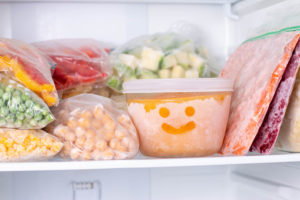
Running a food and beverage business can be both exciting and rewarding. You may contact potential buyers in various methods, whether you’re learning how to sell food from home or splitting your time between different markets.
It’s one thing to sell food in person, but delivering it is a very different difficulty. Shipping frozen food is particularly challenging since you must ensure that the items arrive in good condition.
If you don’t have the proper eCommerce packaging for your products, they can swiftly deteriorate. Customers may believe you didn’t put forth any effort, and a tarnished image may harm your brand and cause you to lose revenue.
Understanding how to send frozen foods is an essential component of any online business since different types of food require various delivery methods. Whatever food you sell and transport, it must arrive in good shape, is fresh, and uncontaminated. Your business will surely lose clients and income if your food is in bad condition.
Cost For Shipping Frozen Food:

Frozen food transportation costs can range from $30 to $150. You won’t know the exact prices of sending frozen food ahead of time because each package’s contents, size, and weight vary. There are numerous services and features offered by eCommerce shipping firms that influence the price. These services include shipment speed and extra insurance.
Package weight is an essential factor in food shipping costs, as improved packaging is required to keep frozen food safe. It is why knowing how to calculate shipping costs by weight is beneficial.
You may more reliably forecast shipping expenses per unit by standardizing the weights of your items. Making a weight chart of your best-selling items also makes monthly eCommerce accounting easier.
Changing just one type of packing material may save you thousands of dollars over a year. Your customers will enjoy the savings you pass on to them, whether you’re selling through a wholesale marketplace, Custom Crating and Logistics, or an eCommerce website builder.
Ways To Ship Frozen Food Cheaply:
To guarantee that your frozen goods arrive at your consumers in good condition, utilize insulation and refrigeration to keep the food fresh and avoid staleness or spoiling.
You may simplify sending perishable commodities to your consumers by using a customized packaging, shipping, and monitoring approach.
Given the level of attention to detail required to ship frozen goods, it’s no surprise that business owners are looking for methods to save money. Customers want purchases to arrive swiftly and inexpensively, so constant cost-cutting should be high on your priority list.
Even if you send a few dozen things each month, unaddressed charges can cut your profit margin.
The following are seven universal ways for exporting frozen food at a low cost:
- Look for a carrier that specializes in delivering frozen goods.
- Use an insulated container at all times.
- Make use of dry ice.
- Look Around For The Best Deals
- Purchase packaging materials in large quantities
- For each product, optimize the packaging.
- Whenever feasible, ship in bulk.
Look for a carrier that specializes in delivering frozen goods:
Although most shipping firms have sufficient fleets, fewer services are familiar with the requirements of temperature-sensitive goods. Cold freight carriers use trucks with air conditioning. Moreover, their staff is trained to track the status of goods throughout the delivery process. Working with a skilled shipper might be the difference between your things spoiling or arriving in perfect shape.
Use an insulated container at all times:
Using high-quality insulated containers is critical to the art and science of delivering perishable goods. You don’t need a huge box or a container full of gel packs, but your package should be able to withstand extreme heat. Begin with a box or bag of sufficient size. Next, use insulated cushioning such as air cushions or aluminum box liners to keep things warm. Continue to apply until your goods are fully cushioned on all sides, reducing cold temperature loss.
 Make use of dry ice:
Make use of dry ice:
Dry ice is carbon dioxide that has been liquefied and used to keep goods cold for long periods of decades. It stays solid for such a long time at a low enough temperature. Dry ice suppliers are used to food establishments asking for it, so you should have no trouble finding it if you want to use it. For every 24 hours in transportation, the dry ice shipping rule of thumb is five pounds.
Look Around For The Best Deals:
Compare rates once you’ve reduced it to a few carriers you can trust. Just because a shipper boasts cutting-edge features doesn’t imply it’s the ideal option for you. Inquire about any bulk shipping savings or first-time customer specials. Reduce shipment time by setting aside one or two periods for carrier pickup. Instead of going back and forth between cold storage and the packing table, your employees may prepare orders in batches. If you’re delivering frozen foods, be sure they don’t sit out for long periods. If you’re packing five comparable products at once, take them all out of the freezer at the same time and wrap them together.
Purchase packaging materials in large quantities:
Because the food sector relies on steady demand, you’ll need a lot of packaging materials on hand. Purchasing packaging materials in bulk allows you to save money while improving your warehouse management. It allows you to easily shelf and retrieve hundreds of packing units at once. Even if it’s only a tiny bit, it adds up over time.
For each product, optimize the packaging:
It’s no secret that delivering frozen goods may rapidly add to the price. Examine your items and see whether you’re maximizing product packaging. Are you storing small items in huge containers merely for safety’s sake? You’re spending more on shipping, which reduces your profit margins. Examine insulated styrofoam containers appropriate for particular commodities and include them in your selection and packing process.
Whenever feasible, ship in bulk:
Consider setting up a separate refrigerated area where boxes may be stored until collection time. Try out these methods to determine what works best for your company.
Custom Crating and Logistics has you covered if you’re searching for more methods to save money on shipping. Our integrated shipping solutions pool our clients’ purchasing power to obtain the best rates from more than 60 shipping firms. Costs may be calculated, labels created, labels printed with a shipping label printer, shipments and tracked.
Process Of Shipping Frozen Food:
We’ve put up a step-by-step guide to make delivering frozen meals as simple as possible for you:
Preparation Of Product And Its Packaging:
Your food item should be frozen before shipping to avoid condensation. If you’re going to pack baked goods, make sure they’re cool first. Warm or hot food should be packed carefully to prevent mold growth or spoilage.
Packaging is the next factor to consider. Your packaging must be durable to maintain the food’s temperature for an extended time. When it comes to items that come into touch with food, you should ensure they’re safe and non-toxic.
Find out what temperature the food item you’re delivering should be stored by conducting some study. You should also figure out what kind of packaging material your product requires.
The cold shipment boxes required depends upon the amount and nature of things you’re shipping. A foam container is generally utilized while transporting frozen commodities like ice cream or shellfish. However, when sending meat, a vacuum-sealed bag is commonly employed.
It’s worth mentioning that these aren’t the most environmentally friendly solutions available, so if you’re delivering frozen items, we recommend looking into recyclable, biodegradable, or compostable alternatives.
Food That Is Prone To Melting Should Be Kept In Waterproof Plastic Bags:
Before you choose a coolant for your food, consider if your cargo contains liquid that might leak during travel. You don’t want your shipping box to be moist and leaking when it arrives at the customer’s door.
To avoid a leaky box, lay absorbent materials at the bottom of the container, such as paper towels or cellulose wadding, to absorb the moisture. You should also double-bag the insulated container with 2-mil waterproof bags, using the fold-over technique to seal each bag.
If you’re sending live food, such as oysters or crabs, leave the bag open to allow air to circulate.
Use dry ice or gel packs to keep your food chilled:
Food is kept frozen during transportation using gel packs and dry ice as the principal coolants. Gel packs keep food cold but not frozen, whereas dry ice keeps food frozen.
Because ordinary ice is heavy and will dampen the container when it melts, dry ice is employed. Dry ice is created from frozen carbon dioxide and is colder at -109.3 degrees F.
On the other hand, dry ice is a hazardous item, so if your cargo weighs more than 5.5 pounds and you’re sending it by air, you’ll be subject to additional limitations.
When handling dry ice, always wear gloves and wrap it in newspaper before putting it in your shipping box.
Gel packs are used to chill food between 32 and 60 degrees Fahrenheit. To avoid freezing, place the food item in a sealed plastic bag before surrounding it with gel packs.
In the insulated box, pad and pack your products:
Place the food item into the box and cover it with enough coolant of the appropriate sort. Fill the empty area with padding to keep the goods from moving.
To offer at least 3 inches of protection around your meal, use tissue paper, peanuts, or bubble wrap alternatives.
Use a strong corrugated cardboard box and the H tape method to close it. It’s a technique that involves applying at least three strips of pressure-sensitive packing tape to all of the box’s seams.
Use proper labeling and categorization:
Make a perishable label for your shipment package.
All dry ice shipments should have the following indications on the outside packaging:
- “Carbon Dioxide Solid” or “Dry Ice”
- The dry ice’s net weight in kilograms
- The shipper’s name and address
- The recipient’s name and address
Select a shipping provider that does not impose any restrictions on your purchase:
The best carrier for you will be determined by the goods you’re sending, the coolants you’ll be using, and how fast you need your product to arrive. Perishable items should not be transported for longer than 30 hours.
Check with your carrier to see whether the frozen item you’re transporting has any restrictions. You won’t be able to transport more than 5.5 pounds of dry ice per shipment with most carriers.
If you’re exporting internationally, the destination country may have limits on the things you’re trying to send. Perishable food, such as vegetables and fresh meat, cannot be mailed to another nation. International mail also prohibits the use of dry ice.
Select Fast Shipment:
After choosing a carrier, make sure you choose a one- or two-day delivery option. Overnight delivery is also a viable option. When delivering temperature-sensitive commodities, speed is crucial.
All carriers have different rapid delivery choices, so choose the one that provides the best balance of speed and cost.
Try to ship early in the week to prevent delays caused by holidays or when your carrier does not allow weekend shipping.
Best Packaging Material For Frozen Food:
The packaging must also be durable enough to prevent the product from external elements that might cause it to deteriorate. Here are some of the most important characteristics to look for in your packaging:
- It must be durable and resistant to cracking at low temperatures.
- It has to be water-resistant.
- It must be simple to fill and close.
- It must be simple to move and store.
- It must be grease and oil resistant.
Here are some best packaging materials used for shipping frozen foods:
- cardboard boxes
- Green Cell Plus
- Vacuum-Filled, Flexible bags
- Aluminum Foil Pan
- Lidding Film
- Glass
Challenges Faced During Shipping Frozen Foods:
Shipping just about any form of frozen or cold food, as many eCommerce merchants are aware, presents significant hurdles. The following are only a few examples:
Harsh temperatures:
Extreme temperatures have a significant impact on packaged and frozen meals. If food is not packed properly to survive the severe temperatures, it gets foul.
Humidity:
Another big concern to frozen foods is humidity, which is compounded by heat in general.
Spoilage:
Another issue that frozen food suppliers confront when the shipment is this. When food is not packed with insulated boxes and refrigerated, it has a far higher possibility of spoiling before being delivered to its intended receiver.
Best Practices for Shipping Frozen Food:
Online businesses must understand how to convey frozen items through couriers without them being tainted during transit. In general, there are several options for overcoming these significant obstacles, including:
- Carefully plan the timing of your shipping
- Making use of the proper shipping boxes and containers
- Collaboration with a recognized shipping firm
- When packing, avoid cutting corners.
- Food shipments must be properly refrigerated and packed.
- If required, make specific courier arrangements.
Shipping Frozen Food With Custom Crating and Logistics:
Many frozen food firms outsource their logistics and distribution to a fulfillment agency. It is an excellent option for people who are short on time, finances, or labor. It also allows you to devote more time to other critical parts of your organization.
Custom Crating and Logistics provides frozen food fulfillment services, including cold storage, inventory management, packing, distribution, and shipping. For example, our shipping and distribution service guarantees that your items arrive in the quickest period possible.
With a developing frozen food business, though, shipping should be the last thing on your mind. Allow our storage, logistics, fulfillment, and shipping expertise to assist you. We can help you deliver your items fast and at a cheap cost. Contact us to learn more about our services.






